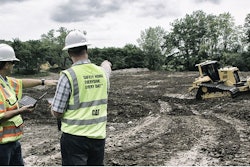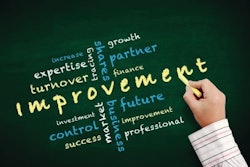
My son hopes to make the football team when he starts high school in the fall. So right now, he’s heads-down with the team’s playbook, studying strategy, tactics, roles and expectations.
As I watch him absorb the information, it makes me wonder: Would a playbook help my team perform at a higher level?
Our goal these days is reducing fleet owning and operating costs. If I were creating a cost reduction playbook, here are some of the roles and responsibilities I’d include.
Owner
As an owner, most of your effort is directed at controlling owning costs. They’re typically fixed costs that can’t be changed once a deal has been sealed.
Your focus:
- Make sure existing equipment is fully utilized before adding more capacity
- Select the right-sized equipment for the job
- Choose features, attachments and options that match the environment and application in which you’ll work
- Invest in features and technologies that save costs over time
- Look at all options including low-hour used or rebuilt machines
- Factor in residual value
- Consider buying a dealer-delivered maintenance plan—upfront—to control future costs
- Shop for competitive financing and insurance rates
To reduce operating costs, the owner can:
- Invest in training to improve operator skills and techniques
- Foster a proactive maintenance and repair culture
- Make idle-time reduction a company priority
- Create an environment that rewards cost reduction and innovative thinking
Operator
As an operator, you have been entrusted with a powerful, expensive asset. Your principal responsibility is running that asset safely and efficiently.
This requires a commitment to:
- Confirm the machine’s readiness to work by completing a walkaround inspection at the start of every shift. Follow the process outlined in the operator’s manual.
- Inspect the unit again at the end of each shift. If things look different, tell the next operator and note the information on your shift report.
- Pay attention to alerts and warnings received while you work. Take action as indicated and keep your supervisor informed.
- Use recommended operating techniques: smooth shifting, steady acceleration, gradual turns, controlled travel speed, no wheel spinning, minimal non-productive movements
- Take advantage of all training opportunities your company offers
- Be open to using technologies and features that increase productivity and reduce fuel consumption
- Avoid excessive idling. Turn your machine off at lunchtime, during breaks or if you’re stopped for more than five minutes. Limit warmup and cooldown to three minutes or less or as required by the machine.
- Ask for feedback about your productivity, fuel consumption and idle time performance (from telematics data). Work with your supervisor to set improvement goals and measure progress.
Maintenance/Service
As a maintenance or service professional, you play a vital role in driving down total operating costs.
Your priorities:
- Work with operators to make sure they complete daily inspections
- Follow manufacturer’s recommended maintenance processes, adapted to match your application
- Consult telematics data to plan maintenance intervals that reflect your real-world work environment
- Use telematics data, fluid analysis and other condition monitoring tools to find and fix problems before failure
- Schedule maintenance and repairs strategically to limit impact on production and costs
- Consider using remanufactured parts to reduce costs and increase uptime
- Keep precise, accurate maintenance and repair records to strengthen residual value
Win Through Execution
A good playbook can provide clear direction for any team. But ultimately, winning is really about execution. Establishing accountabilities. Taking action. Measuring results. Managing progress.
What role will you play in helping your organization execute its cost reduction plans?



















